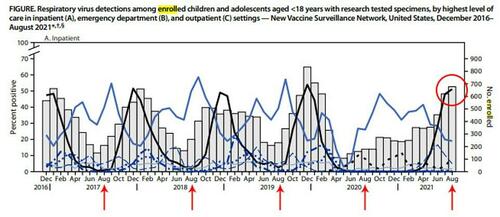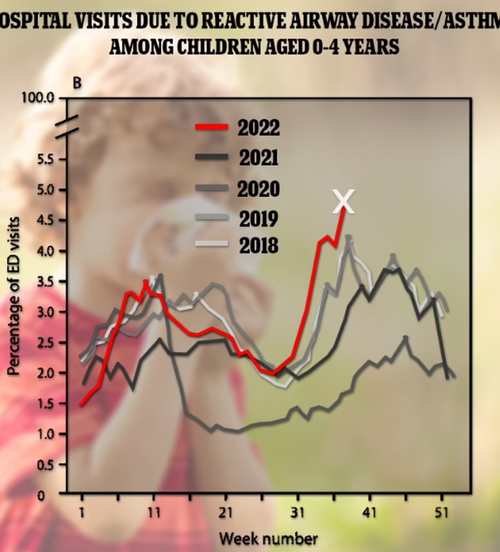Acting swiftly and decisively to extinguish the Ebola outbreak in Uganda is an important priority not just for Uganda, but for Africa and the world. The current outbreak has, thus far, been confirmed to have killed 10 -- including 4 healthcare workers -- and while over 40 cases have been confirmed, none have been outside of Uganda where several districts are reporting cases. However, there is a strong possibility that it will spread to other countries. If resources are not brought to bear, that spread is likely to be an eventuality.
The Outbreak's Origin
Uganda is a nation that has faced a half dozen prior outbreaks of Ebola. Accordingly, the virus is not an unknown entity there. This current outbreak was declared in September 2022 with the confirmation of a fatal case in a 24-year-old male. This was unlikely to be the first case as unexplained deaths had been reported in the first weeks of September. It is unknown precisely how this outbreak started and exactly when it began, though it is likely to have been a few weeks prior to the first confirmed case, as clinical misdiagnosis of Ebola as typhoid, meningitis, malaria, and other infectious diseases can occur.
The Sudan Strain
Complicating this outbreak is the fact that of the six species of Ebola that have been described, the Ugandan outbreak is caused by the Sudan strain. This strain, which is highly lethal, is one which has not been involved in human outbreaks since 2012 and is often overshadowed by the more prolific Zaire strain. The Zaire strain was responsible for the massive 2013-2014 West African outbreak and, not coincidentally, is the strain for which vaccines and monoclonal antibodies are available. Unfortunately, countermeasures for one Ebola strain do not have an impact on others. The exact animal reservoir of the Sudan strain and why and how it emerges have not yet been established. It is assumed to be harbored by bats, like other strains of Ebola.
On-the-Ground Needs
Despite Uganda's past Ebola experiences, it is clear from the pleas of health leaders in the country that they are unable to effectively combat the virus. Coupled with this are concerns about testing capacity, personal protective equipment, economic concerns of physicians, and the need for investigational vaccine trials to commence. This last point is an important lesson to carry forward from 2013-2014: successful vaccine trials that demonstrate efficacy of candidate vaccines in development can be conducted in the midst of an outbreak. There are currently two Sudan Ebola vaccine candidates poised to be tested. The leading candidate, developed by The Sabin Institute, exists in a small ready-to-use supply (though more is available in bulk form). Monoclonal antibody development is also being funded. It is important to emphasize that simple measures, such as intravenous fluid and electrolyte replacement, can have considerable impacts on mortality rates, if these minimal resources needed to provide such supportive care are in place.
A ministerial level meeting is being convened next week by the World Health Organization and the Africa Centers for Disease Control and Prevention. In addition to providing material resources, it will be critical for the health authorities to gain the trust of the population they're advising, as mistrust of simple health messages -- such as safe burial practices -- can foster the spread of the virus (as occurred in West Africa in 2014). Battling misinformation such as allegations of witchcraft are, unfortunately, necessary.
Meeting the Challenge
It is critical for the world to recognize that, just as in 2013-2014, the longer an Ebola outbreak is left to fester in one geographic region the more likely an imported case becomes. As the U.S. painfully learned from the panic and chaos that ensued in Dallas with the initial misdiagnosis and death of Thomas Eric Duncan and the transmission of the virus to two healthcare workers, it is much better to fight and contain Ebola at its source than deal with imported cases and the cascading melee they prompt in various countries around the world. Travel screening of those traveling from Uganda has already been initiated in the U.S., but a much more impactful action would be augmenting testing, contact tracing, public health messaging, and treatment capacity in those regions of Uganda with cases.
Ebola is a deadly, scary disease but one that is not very contagious. It does not possess pandemic potential as it is spread through blood and body fluids, delimiting the efficiency of its transmission. Nevertheless, as was seen in 2013-2014, chains of transmission can be very long and the death and destruction it can cause sizable. It can be stopped in its tracks if resources are brought to bear.
In the wake of COVID-19, it takes a high degree of evasion to not recognize the need for competent and well-resourced responses to infectious disease threats as they appear.
Amesh Adalja, MD, is a senior scholar at the Johns Hopkins Center for Health Security, and a practicing infectious disease, critical care, and emergency physician in Pittsburgh.


